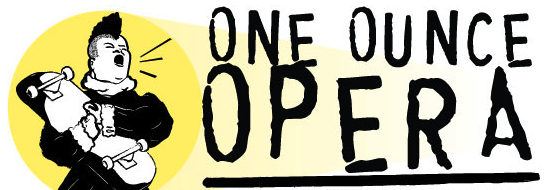Meet Composer Marc Hoffeditz, whose winning song Ne’er Part I will be sung by Soprano Elise Leung Kotara at the 2nd Annual Fresh Squeezed Ounce of Art Song on Friday, November 3rd.
The text is adapted from the beloved story of Peter Pan. In answering questions from Elise, Marc shares more insight, including how he hopes the audience will experience the piece.
 Elise: Peter Pan is a story beloved by adults and children alike. How did you go about preparing the text to be set to music, and what other decisions did you need to make about the text (the time signature, the mood of the piece, different sections of the story…)?
Elise: Peter Pan is a story beloved by adults and children alike. How did you go about preparing the text to be set to music, and what other decisions did you need to make about the text (the time signature, the mood of the piece, different sections of the story…)?
Marc: This text is specifically adapted from the 1911 novel entitled ‘Peter and Wendy’ (in the public domain-woohoo!), but most people are familiar with the original play (1904, still copyrighted) or the Disney movie. What I love most about this story in particular is that I feel people approach Peter Pan with a cheery mindset, but the original book has a much darker perspective of the action and is framed more from the angle of growing up and the hardships associated with the psychology of aging. ‘Two is the end of the beginning’ is a line from one of the earlier chapters, referencing the point in which we realize we will not be children forever, and I thought ‘WHAT. THIS IS SO CHILLING. HOW IS THIS A CHILDRENS BOOK’? So I agree, it’s definitely a classic for both children and adults, but Barrie’s intentions were much deeper than a silly tale about pirates and learning to fly.
A little background on how the piece came to be: It was commissioned by my friend Sarah Hennessey for her senior recital in Boston and she was looking for a piece that described the sensation of being too young to be a grownup, but being too old to be a child. Enter Peter and Wendy! The direction we decided to take was to look at the story from Wendy’s perspective and frame it as her, now a mother, looking back at her adventures and reliving certain parts of her youth. A plot beyond retelling the original story was really important to me to solidify why we were revisiting this tale in particular and to help better understand the dramatic construction of the piece. In this case, the beginning, middle, and end are anchors for her role as mother and the portions between reference her transition from child to adult and vice versa.
In terms of preparing the text: I read the whole book, marking different sentences that stuck out or followed the dramatic structure I was looking for. From there, I adapted the remaining fragments into 9 movements (full version), trying to keep as much of the original text as possible instead of trying to paraphrase. Honestly, it took much longer to read, decide on, and adapt the text than it did to write the score, mainly because I was hearing the music as I was working through the story, but I’d never spent so long with the text of a piece before.

In terms of setting the text: My music in general likes to teeter between humor and pathos and I think Part 1 definitely reflects that both textually and formally. As a general rule of construction, I tried to have the more referentially ‘child-like’ parts of the music written in compound meters and the ‘grown up’ portions written in simple meters. From there, I wanted to juxtapose the blurriness of identity that Wendy felt by referencing both metrical constructs throughout the piece. This is highlighted in the 2nd movement when mother Wendy sings about her childhood in 6/8 while highlighting two main beats (1 & 4) that suggest it could be a simple meter. In the 3rd movement, Wendy is trying to act like her mother by singing in 2/4, but the appearance of gestural dance interludes that hint to a compound meter interrupt her intentions.
Although this is the first real song cycle I have written with such a strong thematic continuity, I found it important to keep things varied and interesting by trying not to telegraph what might happen next. In the end, the piece is comprised of a bunch of styles and influences, but I think the portions of recitative ground the piece and remind you that you are listening to not just a song cycle, but a very relatable story.
Elise: When did you start composing – and what or who were your early passions and influences?
Marc: I started composing little pieces back in the 6th grade. I didn’t really think much of writing music seriously until my senior year, when I wrote a 26 song musical about Abraham and Mary Todd Lincoln called An American Love Story (yes, cheesy as hell). From there, I started studying composition in college and haven’t stopped since! (Haven’t written another musical though….but maybe that’s okay)
I was a big musical theater fan in high school (hence the creation of an egregiously long musical) and I think both Stephen Sondheim and Schwartz were really early influences. The end of Pippin always made me super uncomfortable, yet I couldn’t stop going back to listen and is probably why I like the possibilities of devil’s advocacy in my music. I also remember being 17 or 18 watching Into the Woods and sobbing uncontrollably when ‘Children will listen’ started playing. I think these were really defining musical experiences and a large reason why as to why I like to re-contextualize popular stories and play with a landscape of contrasting emotional experiences
Nowadays, I think my influences include Benjamin Britten, Alban Berg, and an array of styles found in the early 20th century reinterpreted through 21st century ears. I also really respond well to Libby Larsen, Thomas Ades, and George Benjamin. Non-musical influences include anything to do with identity, especially how we formulate it today through our technological word and weird or uncomfortable subjects approached with a sense of universality and pathos.
Elise: Do you have any specific hopes about how people might experience this piece?
Marc: I don’t really have any expectations of how people will perceive my works as they are happening, but I think from the performer’s perspective that knowing the larger arc and the beginning-is-the-end aspect should be highlighted. A big reason I love writing vocal music is because I love storytelling and I like to emphasize that to those that perform my works. You are NOT just a singer, you are a story teller! Tell us a story and get us hooked on whatever you are singing! The only way the audience is going to believe what is happening and what they are hearing is if you truly believe it and imbue yourself in it.
JOIN US TO EXPERIENCE ELISE PERFORM MARC’S “Ne’er Part I” on NOV. 3rd!
_____
Marc Hoffeditz is a composer of vocal and instrumental music searching to balance the humors of sarcasm, pathos, camp, and vulnerability. He has made his mark on the indie opera scene with performances by Rhymes with Opera, OperaRox Productions, Hartford Opera Theatre, and Opera from Scratch (Nova Scotia). His song cycle/monodrama Ne’er was chosen for performance at the 2016 Minnesota Source Song Festival, where he worked with acclaimed American composer Libby Larsen. Recent performances include the premiere of There will be no more, a song cycle for tenor and piano with OperaRox Productions in NYC.
To learn more about Marc and his music, visit https://soundcloud.com/marchoffeditz.

